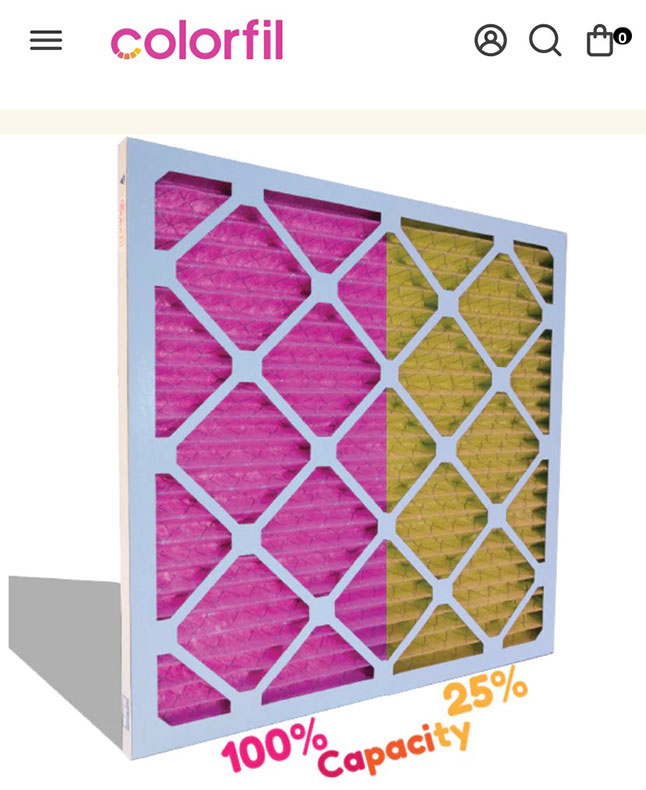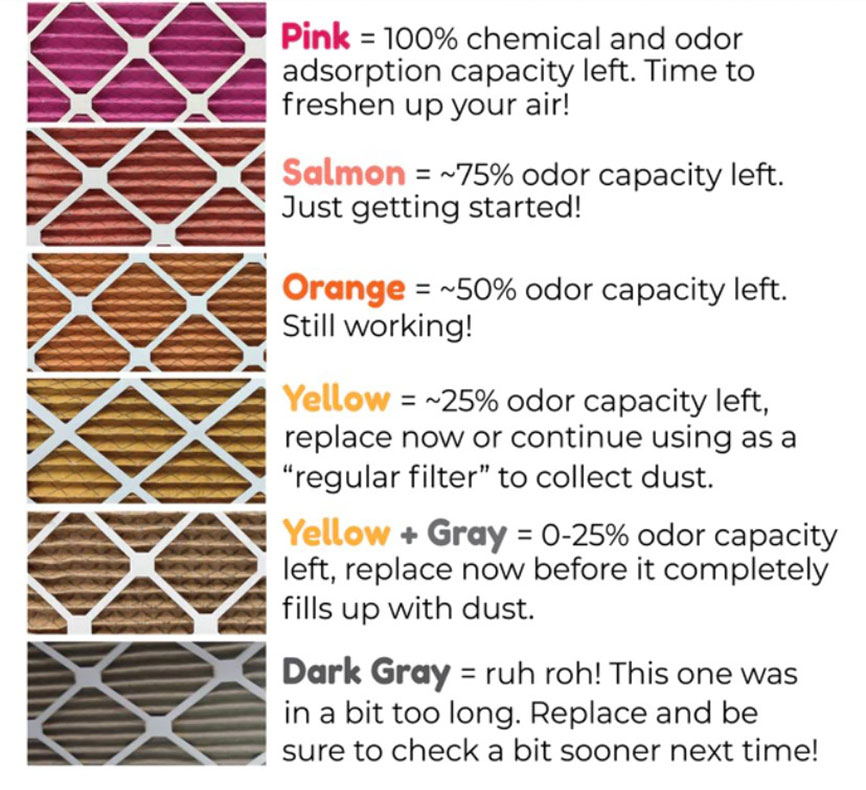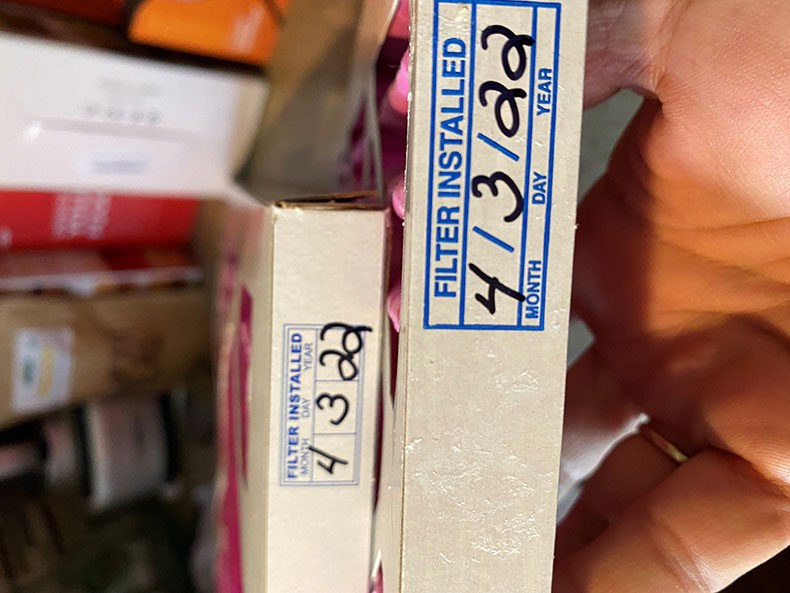Members often ask us about products that make energy saving claims. As the Covid pandemic progressed, businesses and homeowners began to pay even more attention to indoor air quality. We’ve been asked on numerous occasions to chime in on Colorfil© air filters so we decided to give them a try.
Colofil© filters, according to their website, capture and remove five times more odors than the “leading air filter.” Their marketing materials tout NASA- backed research that resulted in a patent-pending technology involving polyelectrolytes, which are polymer substances with a permanent electrical charge on them. This makes it possible for the filter to change colors.
Before getting to the review, let’s discuss what is unfortunately missing from Colorfil’s© online product description: a discussion of MERV ratings. MERV is the minimum efficiency reporting value which reflects a filter’s ability to capture larger particles. This value is helpful in comparing the performance of different filters and is derived from a test method developed by the American Society of Heating, Refrigerating, and Air Conditioning Engineers (ASHRAE). The higher the MERV rating, the better the filter is at trapping specific types of particles. You might think the higher the MERV rating the better, but you’d be wrong. Why? Because most HVAC systems are not designed for a return air filter with a high MERV rating. For example, a MERV rating of 13-16 is considered hospital level air quality where the system has been properly designed for an infectious disease environment.
Proper filter selection depends on several factors starting with the size or dimensions of your return air register, the number of return air registers for each HVAC system (regrettably most homes still only have one return air register), and the HVAC system pressure drop across the filter. If your HVAC system has a variable speed blower they are more accomodating of a higher MERV filter, but energy costs can rise as a result. However, the vast majority of people still don’t have a variable speed blower and in those cases we see a definite trend toward reduced air flow which can damage the system itself. There’s a whole bunch of scientific mumbo-jumbo to back all of this up but here are our simplified tips:
- Ask your HVAC installer what MERV filter your system is designed to accomodate.
- If you want to utilize a higher MERV filter, have your HVAC company increase the size of your return or add additional returns.
- Change your filter regularly no matter the type because the MERV rating upon installation continues to climb as more and more particulates collect on the filter’s surface.
- When in doubt stick with a non-pleated filter. Otherwise, you could end up with an expensive repair or system replacement bill.
To Colorfil’s© credit they did promptly respond to our online inquiry: “Colorfil filters have a MERV 8-9 particle efficiency, but due to the added coating, we recommend our filters be used with furnaces that can handle filters MERV 11 or higher. Our filters typically deliver a good balance for particulate filtration while also providing Colorfil’s unique odor removal and color change that you wouldn’t get from a traditional air filter.”
On to the actual product testing. Each filter fit the openings snuggly, which is important for good air filtration. Within the first few minutes of active filtration, a strong odor was detected akin to latex paint. It was quite off-putting. A message sent to Colorfil© describing the odor and to see if that was normal received the following reply:
“We suspect the odor you’re describing is from the glue that is used to hold the filters together and will look into glue alternatives that don’t have such a strong odor.”
Fortunately, the odor dissipated within a few days. It didn’t take very long for the filter to change colors, but we could never really get it to correspond to the manufacturer’s color chart. After 35 days of use it definitely began to trend more towards yellow, which was past the time we would normally replace our more basic filter (every 30 days). Did it impact indoor odors? Well, there was a nasty incident involving an overcooked pan of squash and zucchini and the odor didn’t linger.
The verdict? We can appreciate the color changing aspect if for nothing else than to serve as a visual reminder to change filters. There are easier reminders though, such as the receipt of your monthly electric bill, but to each his or her own.
With each filter we ordered costing $21.99, that’s a bit of a hard pill to swallow compared to a basic filter, but it could be an attractive alternative if you have a variable speed system designed for high-filtration media. It might be worth using them for a limited time after new construction as building materials off-gas. Regardless, we never recommend the extended use of any filter. So rule of thumb still remains our best advice: change filters every 30 days. And beware voiding your HVAC warranty by using the wrong filter media.
Connect with your co-op
As a not-for-profit electric cooperative, Tideland EMC is owned by its members and is dedicated to delivering safe, affordable, and reliable power. Learn more about how we support you and the communities we serve.





